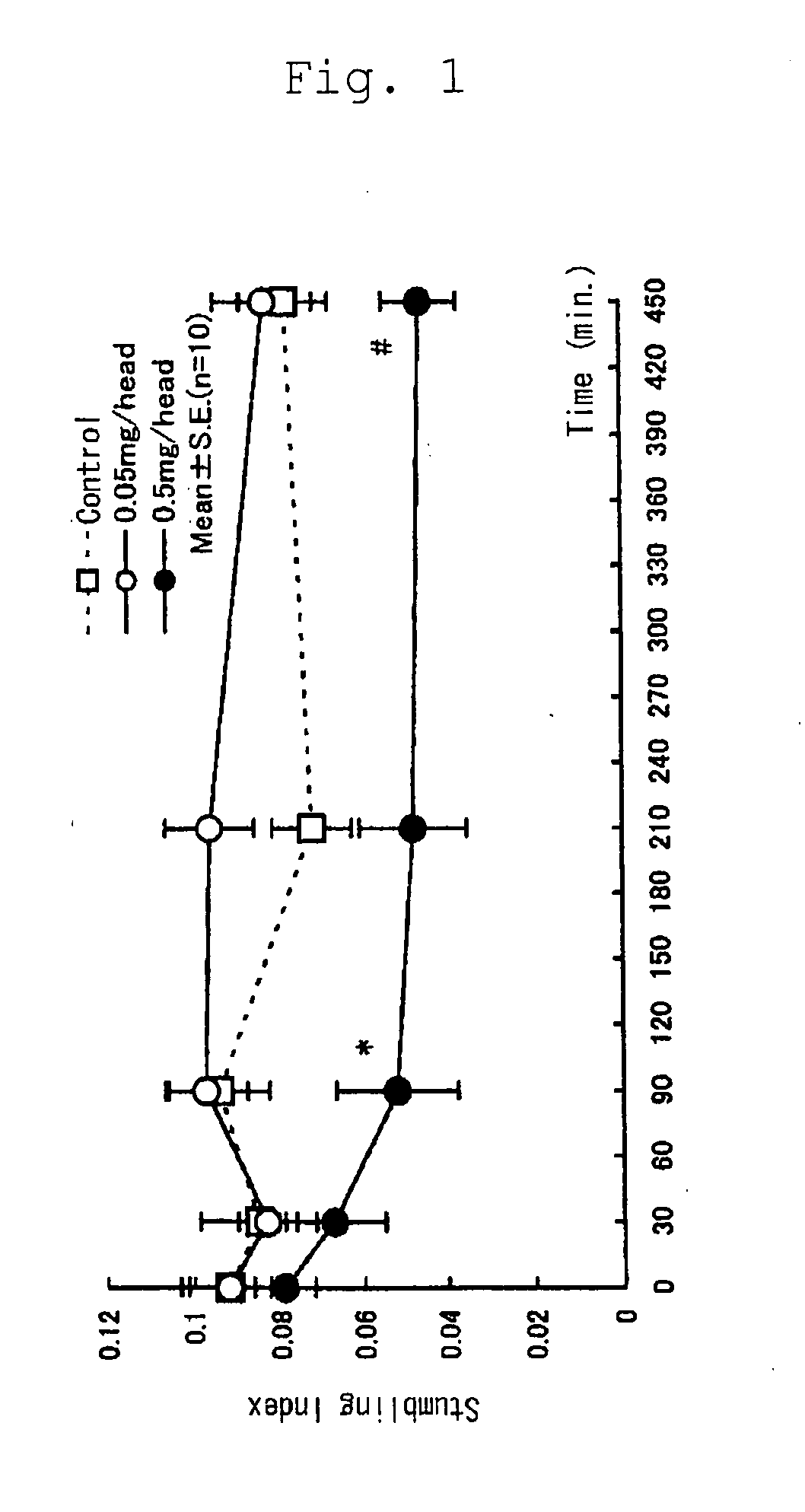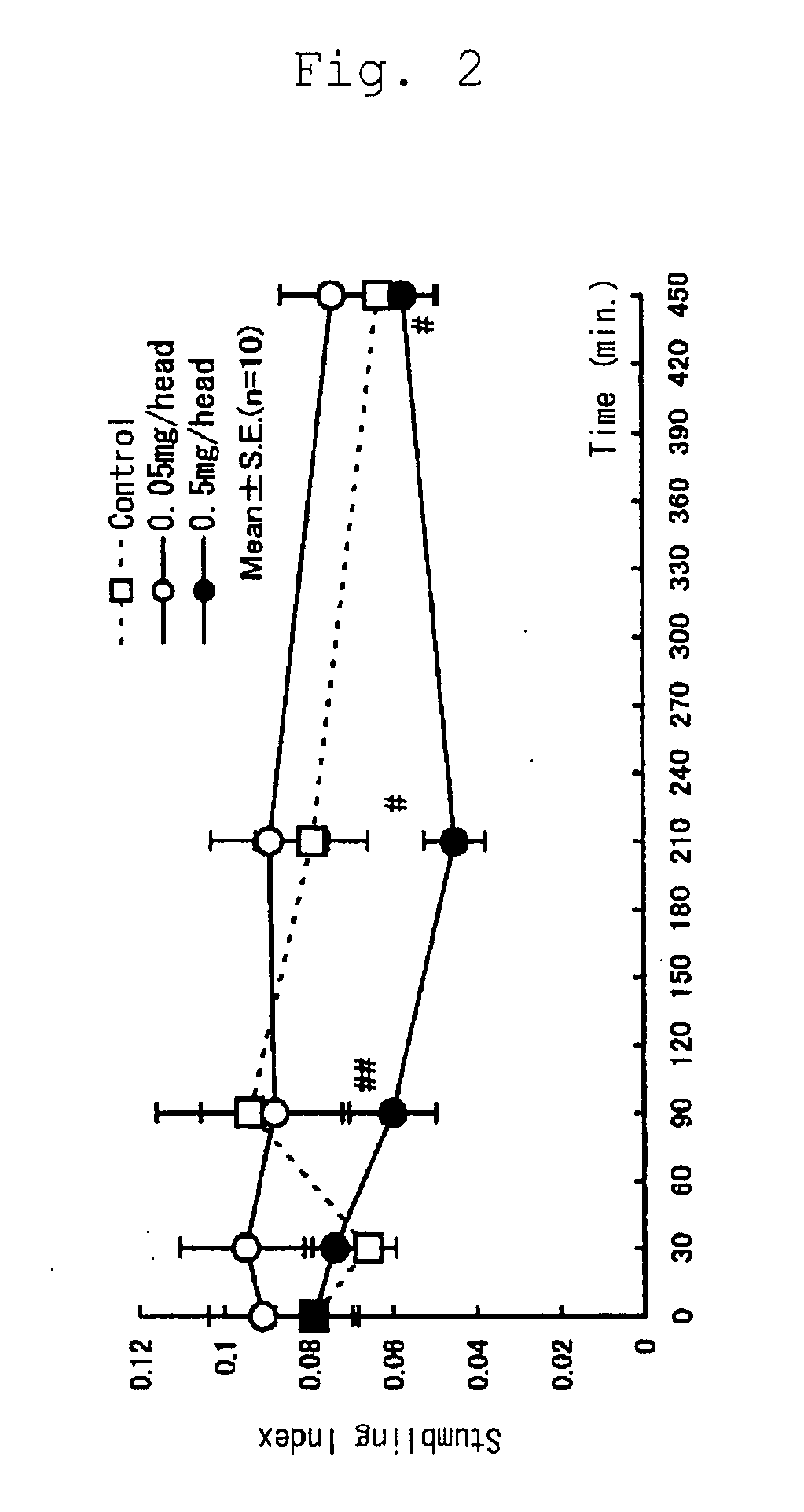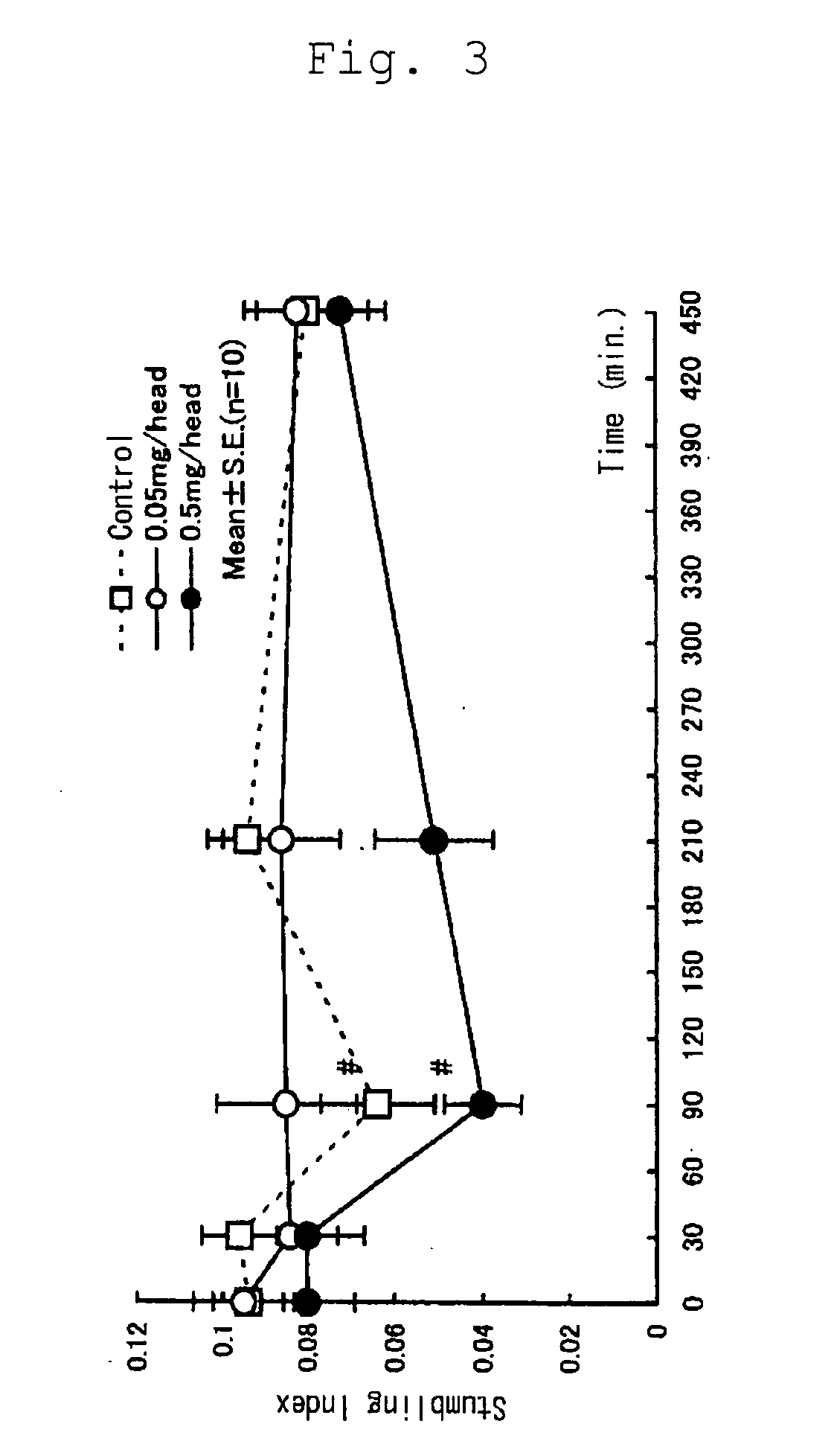Novel medicament for treating neurodegenerative diseases
a neurodegenerative disease and drug technology, applied in the field of new plasma protein medicine, can solve the problems of side effects, the effectiveness of remedy is not so much appreciated,
- Summary
- Abstract
- Description
- Claims
- Application Information
AI Technical Summary
Benefits of technology
Problems solved by technology
Method used
Image
Examples
preparation 1
(Purification of Selenoprotein P Fragment Using Anti-Selenoprotein P Fragment Antibody-Bound Carrier (Anti-SeP Antibody Column))
[0029] As described below, selenoprotein P and selenoprotein P fragments were purified from plasma based on the cell death-inhibitory activity of selenoprotein P.
[0030] Heparin Sepharose-binding fraction from plasma was precipitated with 2 M ammonium sulfate. The precipitate was dissolved in more than 5 volumes of 20 mM Tris buffer, pH 8.0. Selenoprotein P present in this solution was adsorbed to a carrier to which an antibody against selenoprotein P fragment was bound (anti-SeP antibody column) and the carrier washed with PBS. Selenoprotein P was eluted with 20 mM citrate buffer containing 4 M urea and was adsorbed to a cation exchanger (Macroprep High S: BioRad) equilibrated with 20 mM citrate buffer. Then, gradient elution was performed with a salt concentration of sodium chloride and a fraction of selenoprotein P fragments having the cell death-inhib...
preparation 2
(Peptide Synthesis)
[0031] Selenocysteine was protected with Fmoc (9-Fluorenylmethoxycarbonyl) or MBzl (p-Methoxybenzyl). With the protected selenocysteine, desired peptides were synthesized by the Fmoc technique with a peptide synthesizer. Then, the peptides were deprotected and purified by reverse phase HPLC.
[0032] The present inventors confirmed that a peptide having the amino acid sequence: Lys Arg Cys Ile Asn Gln Leu Leu Cys Lys Leu Pro Thr Asp Ser Glu Leu Ala Pro Arg Ser Xaa Cys Cys H is Cys Arg H is Leu Ile Phe Glu Lys (SEQ ID NO: 3) wherein Xaa represents selenocysteine had the cell death-inhibiting activity, which peptide was purified under reduced condition from selenoprotein P fragment having the amino acid sequence: 260Lys Arg Cys Ile Asn Gln Leu Leu Cys Lys Leu Pro Thr Asp Ser Glu Leu Ala Pro Arg Ser Xaa Cys Cys H is Cys Arg H is Leu Ile Phe Glu Lys Thr Gly Ser Ala Ile Thr Xaa Gln Cys Lys Glu Asn Leu Pro Ser Leu Cys Ser Xaa Gln Gly Leu Arg Ala Glu Glu Asn Ile Thr Glu ...
example 1
(Effect of Selenoprotein P on Ataxia in Rolling Mouse Nagoya)
[0036] In order to confirm the activity to ameliorate ataxia of selenoprotein P, Rolling Mouse Nagoya, the established model of ataxia, was used with a stumbling index. Animals were divided into the following groups each consisting of ten animals: a control group intraperitoneally administered with saline (0.25 mL / head / week); a group intraperitoneally administered with a low dose of selenoprotein P (0.05 mg / head / week; 0.25 mL / head / week); and a group intraperitoneally administered with a high dose of selenoprotein P (0.5 mg / head / week; 0.25 mL / head / week). The animals received intraperitoneal administration once a week for three weeks.
[0037] The animals were Rolling Mouse Nagoya (113 animals, five to eight months old, weighing 19.1 to 36.2 g) regardless of sex. Grouping of the animals was based on the weight measured on the day before initiation of the experiment and a stumbling index measured before initiation of the expe...
PUM
| Property | Measurement | Unit |
|---|---|---|
| frequency | aaaaa | aaaaa |
| concentration | aaaaa | aaaaa |
| pH | aaaaa | aaaaa |
Abstract
Description
Claims
Application Information
 Login to View More
Login to View More - R&D
- Intellectual Property
- Life Sciences
- Materials
- Tech Scout
- Unparalleled Data Quality
- Higher Quality Content
- 60% Fewer Hallucinations
Browse by: Latest US Patents, China's latest patents, Technical Efficacy Thesaurus, Application Domain, Technology Topic, Popular Technical Reports.
© 2025 PatSnap. All rights reserved.Legal|Privacy policy|Modern Slavery Act Transparency Statement|Sitemap|About US| Contact US: help@patsnap.com



